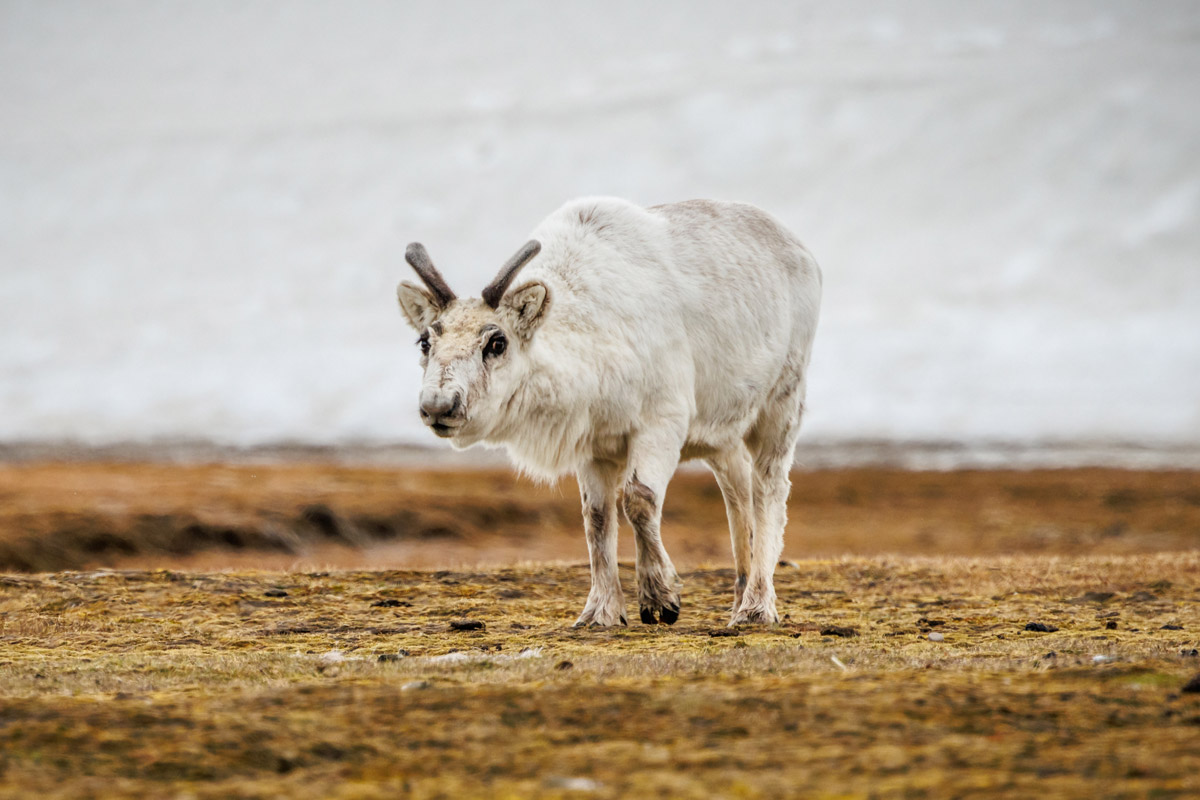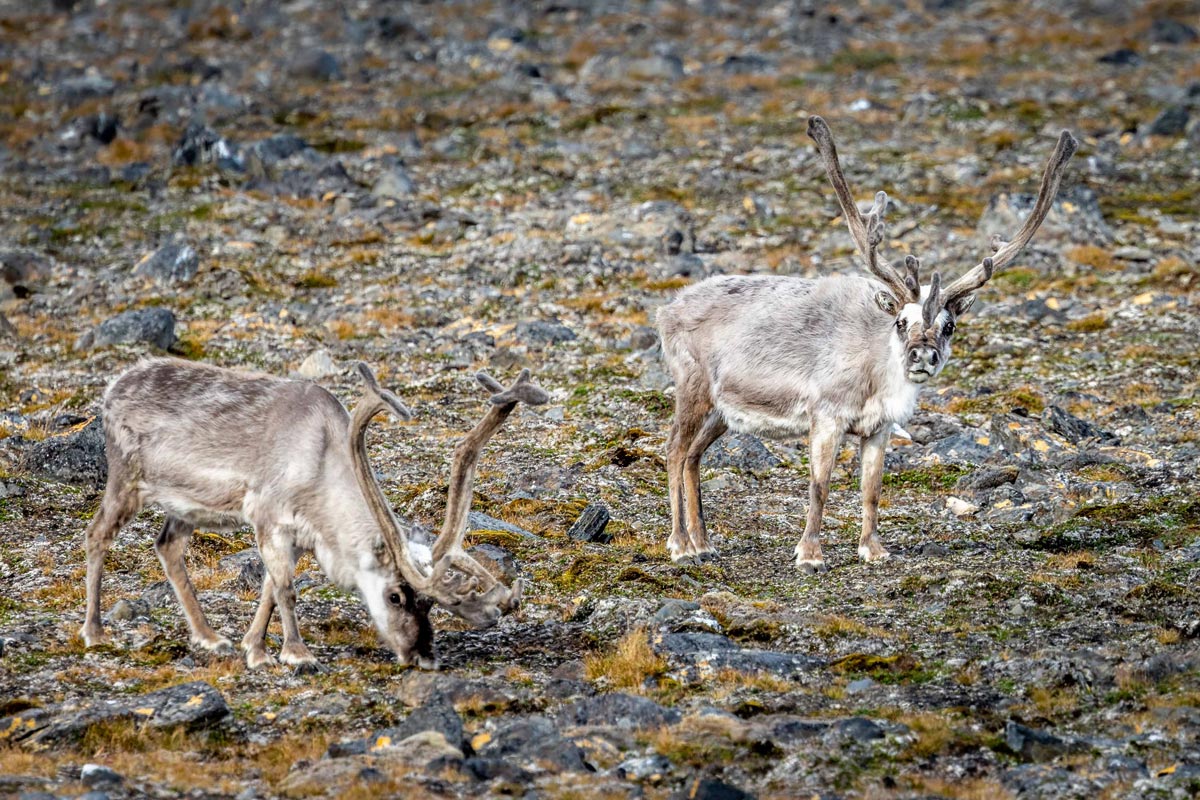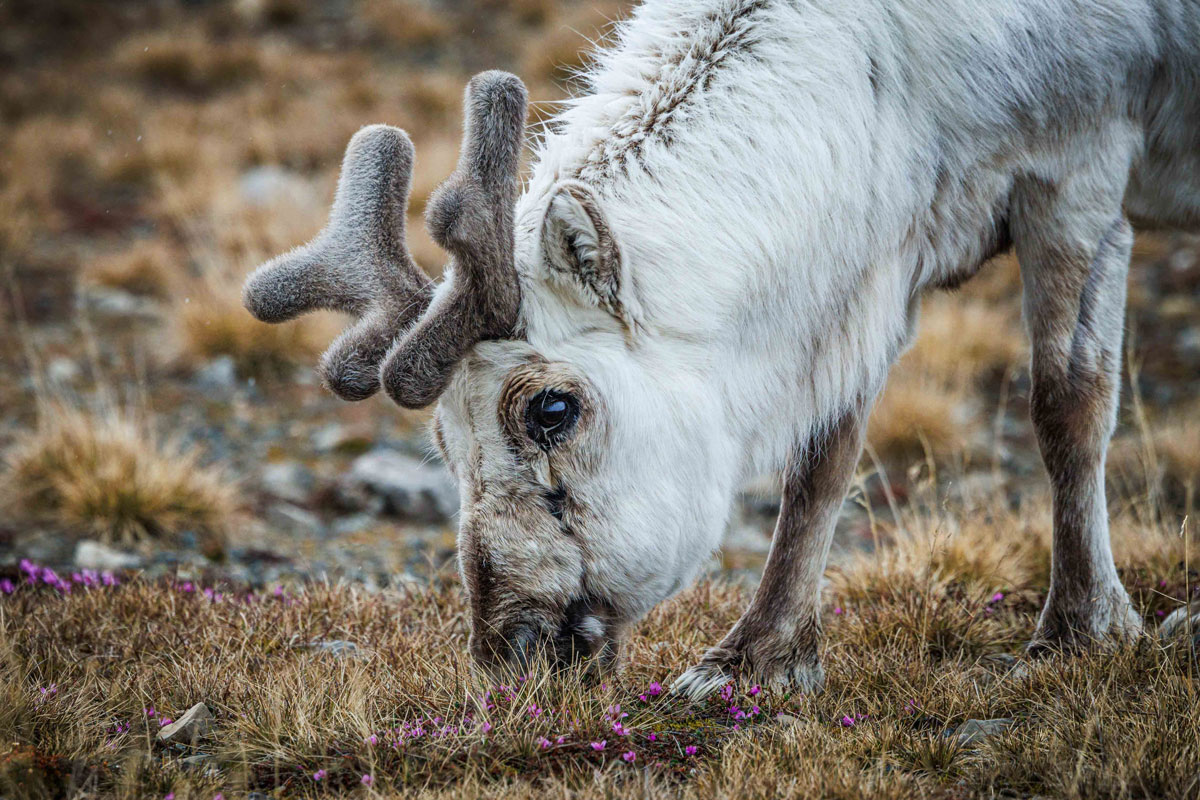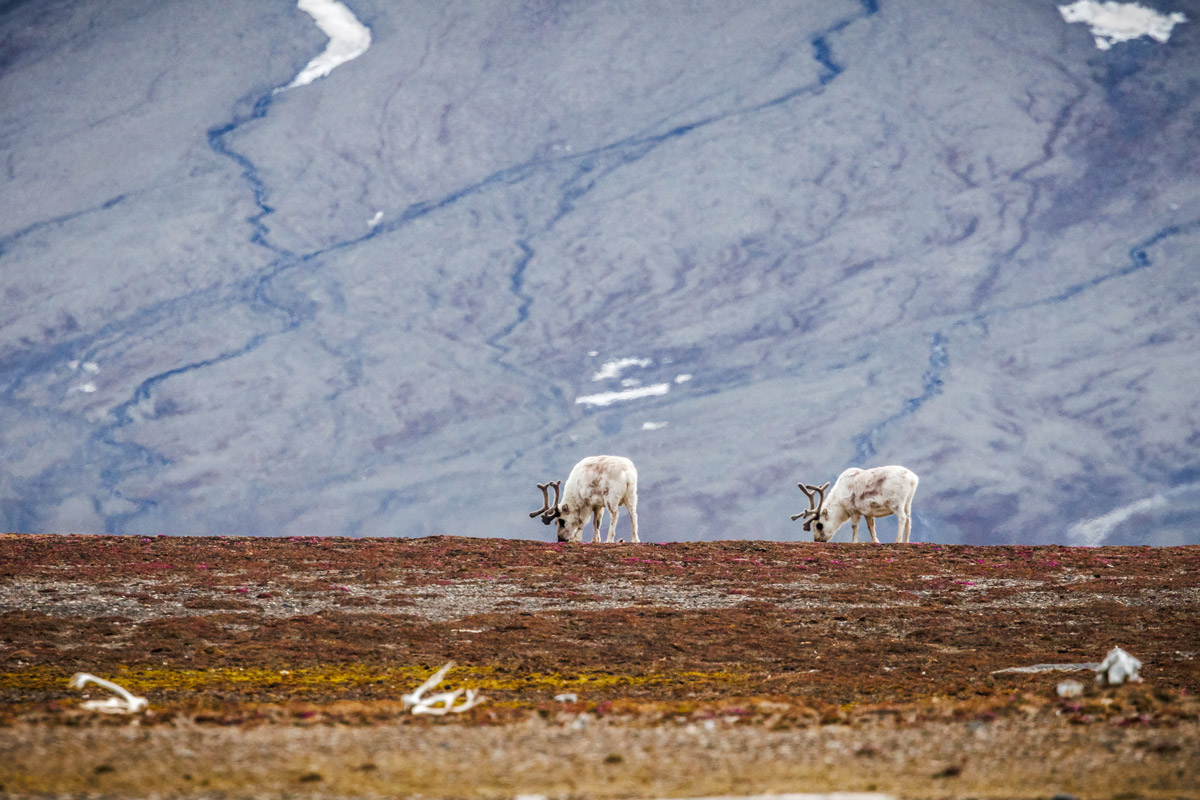Svalbard Reindeer
Svalbard Reindeer Quick Overview
| Scientific Name | Rangifer tarandus platyrhynchus |
| Population | Estimated at 10,000-22,000 in Svalbard |
| Regions | Arctic tundra, primarily in Svalbard |
| Destinations | Svalbard (Nordenskiöld Land, Edgeøya, Barentsøya, and other non-glaciated areas) |
| Average Length | ~1.6 m (5.2 ft) |
| Average Weight | ~53-90 kg (117-198 lbs) |
| Diet Habits | Primarily grasses, mosses, lichens, and small Arctic plants. During winter, they rely on stored fat and dig through the snow to find vegetation. |

Calf observed during our expedition to Andreetangen, Svalbard
Questions Guests Ask About the Svalbard Reindeer
What Does a Svalbard Reindeer Look Like?
The Svalbard reindeer is a small subspecies of the Rangifer tarandus. The body mass of males is approximately 65 kg in spring and 90 kg in autumn, while the female body mass is approximately 53 kg in spring and 70 kg in autumn. The approximate lengths of males and females are 160 cm and 150 cm, respectively.
They have short legs and a relatively small, rounded head. Its fur is brown on the back and light on the belly, varying between the seasons. In winter, the fur is lighter in colour than in summer, often appearing light grey or yellow-white. The thickness of the coat contributes to the short-legged appearance and makes even starved Svalbard animals appear fat in the winter.
Males are larger than females and have larger antlers. Males develop large antlers from April to July and shed their velvet from August to September. They lose their antlers in early winter. Females begin to grow antlers in June, which are usually retained for an entire year.
Where Are They Located?
From its name, you can already suspect where this reindeer species can be encountered. Being an endemic subspecies from most of the non-glaciated regions of Svalbard, it is usually seen in areas such as Nordenskiöld Land, Edgeøya, and Barentsøya.
Are They Herbivores?
Yes, every reindeer species is herbivorous, feeding exclusively on plants. The Svalbard reindeer diet consists of grasses, mosses, lichens, small Arctic plants and flowers. During summer, they tend to eat as much as possible to store food in their bodies, since access to food is limited and of lower quality during winter, so they rely on their fat reserves.
How Long Do They Live?
The Svalbard reindeer lifespan is typically 10–12 years, although some individuals can live up to 15 years in the wild.
Are There Any Predators They Need To Watch Out For?
Living on an isolated island offers certain advantages. These animals face no natural predators in Svalbard. However, polar bears may occasionally prey on weak or abandoned Svalbard reindeer calves when the opportunity arises.
How Fast Are They?
These reindeer can run at speeds of 60 to 80 km/h (37 to 50 mph), but this rate is slower than other subspecies, as their shorter stature makes them less agile.
How Many Reindeer Are There in the World?
Living in the harsh climate of the Svalbard archipelago and facing difficulties accessing food, the Svalbard reindeer population ranges from 10,00 to 22,000 individuals. Currently, their numbers are decreasing, and they are classified as ‘Vulnerable’ (IUCN).
What Is the Duration of Their Gestation Period?
The Svalbard reindeer gestation period lasts about 230 days (7.5 months), giving birth in June of a single calf.
How Did the Reindeer Get to Svalbard?
Reindeers have a circumpolar distribution, with seven subspecies occupying different regions, migrating from mainland Eurasia to the regions where the Svalbard reindeer now reside. They likely became isolated from other reindeer populations around 10,000 years ago, developing unique adaptations to survive in the extreme Arctic environment.

Males grow large antlers between April and July
How Many of These 10 Svalbard Reindeer Facts Did You Already Know?
- They can lose up to 54% of their body weight during winter.
- They are the tiniest of all the reindeer subspecies, with a compact body and short legs to retain heat in the Arctic.
- Some of their adaptations for survival in the tundra are their thick fur, a small, stocky body, and extremely short limbs, head, legs, ears, and tail.
- A Svalbard reindeer baby (calf) is born in June, weighing approximately 6 kg (13 lbs).
- Although they have no natural predators, polar bears can occasionally kill them.
- They help sustain the tundra’s balance by grazing on plants.
- They are one of the most cold-adapted members of the deer family, living in the Arctic tundra all year-round.
- When not living alone, Svalbard reindeer usually gather in small groups of three to five individuals.
- They can cover distances of as much as 5000 km annually.
- Females typically give birth to their calves at the age of three.
Want to see Svalbard reindeers for yourself?
Reach out to our team to learn more about our voyages any time!




